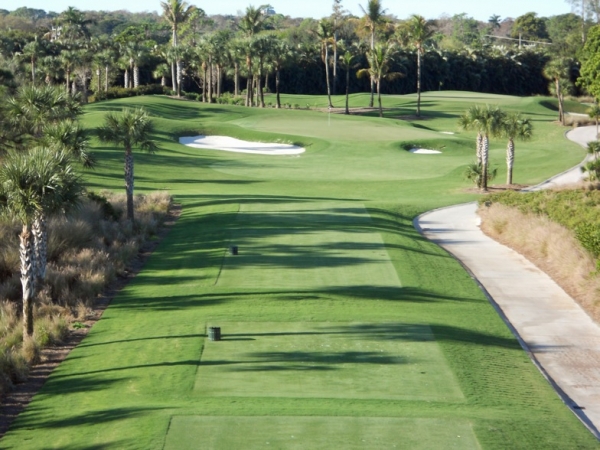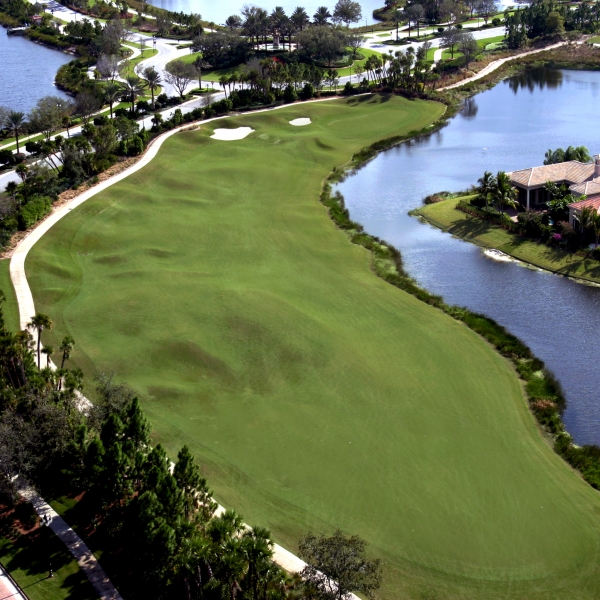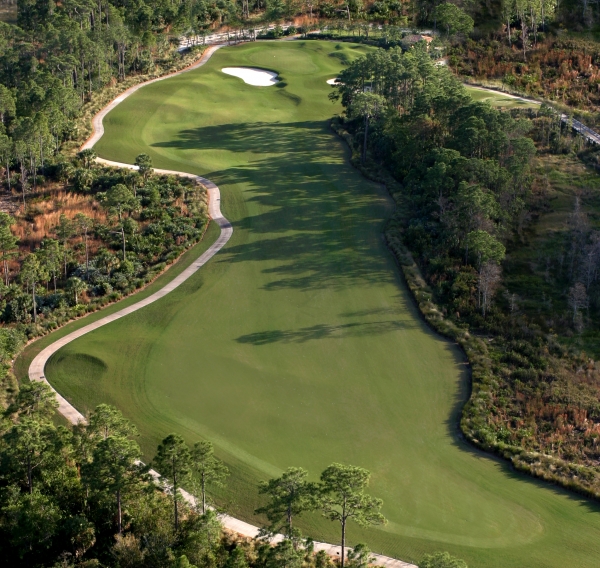The Florida Swing
This week marks the beginning of the annual PGA Tour sweep through Florida …including stops at PGA National, Doral, Innisbrook, Lake Nona, and Bay Hill - all tune-ups for the April bloom date in Georgia. So let’s say hello again to palm trees, white sand, grainy bermudagrass greens and lots of liquid trouble.
It’s too bad that Florida venues don’t get a bit more consideration and respect - or maybe an occasional nod to host major championships (other than the new May date for the TPC in Jacksonville). The pundits are usually quick to take a pass, or a quick jab on Florida golf. I suppose many of their preconceptions are based on the stereotypical facilities found within housing communities and perhaps the overabundance of repetitious water hazards. Or maybe it’s the lengthy walks between holes or the oppressive heat and humidity in the summer? But whether you care for the golf in the Sunshine State or not, you cannot argue that it has long been the unofficial capital of our game, with over 1000 courses, more than in any other state in the US.
Each October the snowbirds from the Northeast and Midwest flock to warmer climes to enjoy the sunshine and a seemingly endless collection of golf courses until their re-entry to their northern temperate homes in April. It is true, there is heavy influence from the retirees and the courses are largely geared for their games. Golf purists have taken note. And for all of this, Florida golf can take some pretty pointed criticisms. Writers and raters alike have taken their share of shots at many of the new courses that sprang up as a result of the housing boom in the ‘90’s and early ‘00’s. Complaints of excessive lakes, lack of architectural imagination, similar and unimaginative characteristics, fairways lined with homes and long cart rides. Don’t get me wrong… I get it – I was one to ride that wave! Many of those courses are certainly utilitarian in nature and sometimes bare a dull resemblance to one another.
You could say that Florida courses are hampered a bit from their very infancy. Aside from a few rare instances, the majority of golf courses in Florida are developed on flat terrain – a piece of ground that is essentially featureless and lacking in natural capabilities to drain. And unlike the rolling land in the East and Midwest, the sites in Florida are normally devoid of much vegetation, or anything of considerable value. And is the case with most development parcels from the past 20-30 years, developers would gobble up the least expensive land – yes, the tracts with wetlands, canals and power lines going through – and maybe an adjacent interstate highway. Their primary goal was to sell houses first, then memberships. So they would find a great deal on land and then determine a way to turn it as quickly as possible into a huge profit. Golf is rarely seen as the priority, but more of a necessity.
Along the process, the architects charge is to somehow work with the developer to create a workable arrangement of holes that negotiates all of the shortcomings of the site. Assuming that a functional routing can be mediated with the owner and land planner (one that typically yields the most lots), the next challenge is to design a course that achieves a balanced earthwork approach whereby site excavations will create ample fill dirt to raise building pads for homes and roads, leaving borrow pits to serve as storm water retention (ponds and lakes). Then, typically whatever dirt is left over… well… that is for the shaping of the golf course!
Depending on the budget and goals of the project, there may be plenty of dirt or sometimes just enough to get by. Therein lies the remaining challenge; to create an imaginative design that links holes together between houses and roads, and amongst lakes and wetlands… and then either enhance or completely create a landscape that is attractive and functional. Oh, and also impress golf pros, writers and raters and a few of the golfing purists that sometimes suggest on the eradication of such ghastly courses! Notice that I did not include the end user or the future homeowner or member in that group – as their needs were rarely considered to be as important as those of some developers. According to some developers, their fate has already been decided.
I can still say without hesitation, though, that there are hundreds of well-conceived tests of golf in Florida – even among those that were developed with real estate as the primary focus. Some venues are incredibly amazing case studies for integrating golf with the environment and others that reclaim industrial waste sites. Others provide terrifically enjoyable experiences for members and homeowners as well. So the next time you take the chance to play some citrus golf, look more intently for the ways the architects looked to avoid repetition and create something distinctly unique despite the inherent challenges and developer directives. For nothing more than architectural merit and the enjoyment of the game, I encourage more of those “in the know” to open their eyes bit and take in some great golf.




Comments
No comments.